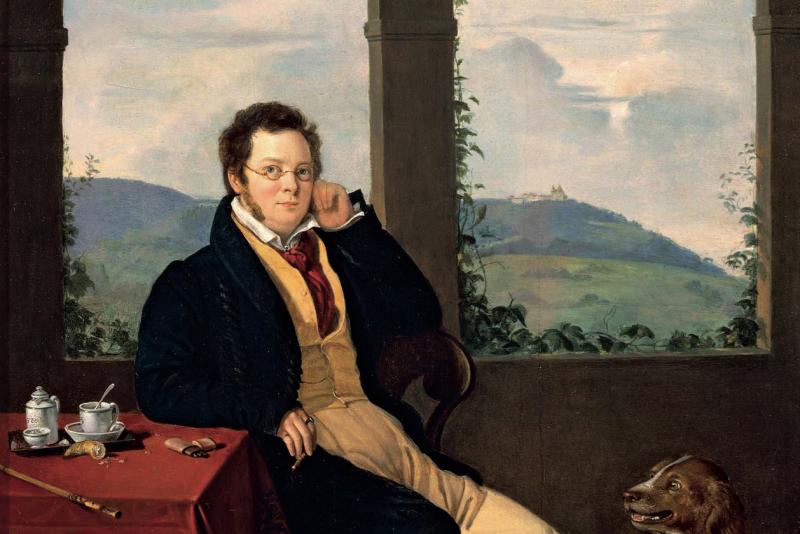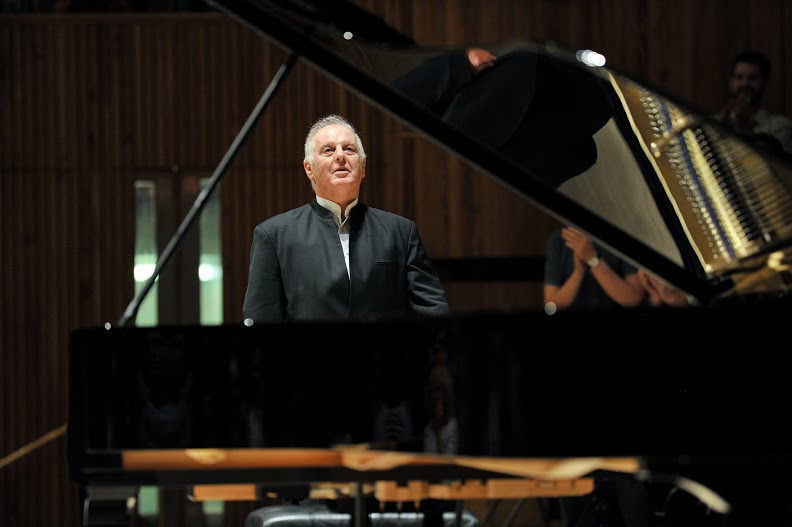Schubert Sonatas 3, Barenboim, RFH | reviews, news & interviews
Schubert Sonatas 3, Barenboim, RFH
Schubert Sonatas 3, Barenboim, RFH
The composer came first in the happiest concert so far of the revered pianist's series

“You don’t love Schubert’s music?” Such, according to the greatest of living Schubert interpreters Elisabeth Leonskaja, was the response of her mentor Sviatoslav Richter to students who omitted the exposition repeats in the piano sonatas. Daniel Barenboim doesn’t observe them either, on the evidence of yesterday afternoon's concert, but four recitals and much in them ought to prove th
Let’s just say of the Sunday-afternoon third in his series that it always fascinated even when it felt odd or wrong, and that Barenboim put Schubert’s infinite variety to the test with an unusual three-act play in which pain was but the occasional episode in a general drama of happiness, to reverse Hardy’s end-of-novel maxim. Like Jessica Duchen and Gavin Dixon, covering respectively the first and second programmes on theartsdesk, I come down firmly in favour of the much-discussed instrument constructed by Chris Maene. In the first bars of the recital, there wasn’t the shine we expect from a Steinway, but exceptional clarity never cancelled out an upper register with a very individual “ping”, a sonorous bass or the music-of-the-spheres pianissimos which I’d been led to believe I wouldn't find in Barenboim’s Schubert.
There they were, shifting expected centres of gravity in two of the "acts". In the E flat Sonata D568, a late refashioning of an 1817 work originally set a tone lower, they hovered over the magical other world of the Menuetto: Allegretto, making a subtle transition from the perfunctory minor key of the preceding Andante molto to the blithe flow of its finale. In the second movement of the D major Sonata D850, glowing genius rendered not too preciously sublime, it was the second strain which took us to a poarallel universe and steered us almost painfully back to Schubert’s version of humanity.
 The corresponding movement of the A minor Sonata D784 would have felt cramped to lovers of the Richter way with Schubert – that’s me, for one – but just right to others. Likewise the D major’s ecstatic outpouring, still young man’s music with the wise knowledge or mortality always imminent. It could have spread its wings more freely. But that wasn’t Barenboim’s intention (the pianist pictured above by Chris Christodoulou), and he was persuasive enough to command respect for his point of view. Where he undoubtedly wobbled was in the first two finales, teetering in erratic tempi in a way that didn’t heighten the expressive intent simply because Schubert’s repeated rhythmic patterns weren’t well enough articulated.
The corresponding movement of the A minor Sonata D784 would have felt cramped to lovers of the Richter way with Schubert – that’s me, for one – but just right to others. Likewise the D major’s ecstatic outpouring, still young man’s music with the wise knowledge or mortality always imminent. It could have spread its wings more freely. But that wasn’t Barenboim’s intention (the pianist pictured above by Chris Christodoulou), and he was persuasive enough to command respect for his point of view. Where he undoubtedly wobbled was in the first two finales, teetering in erratic tempi in a way that didn’t heighten the expressive intent simply because Schubert’s repeated rhythmic patterns weren’t well enough articulated.
So we come back to those missing exposition repeats, which simply rob the first movements of their equilibrium, or at least the way it goes out of kilter in developments which give the lie to any generalizations like the programme’s “his was an essentially gentle art” (what an opportunity missed not to have had real Schubertians involved in printed and spoken word around the series). I know the Brendel school tends to omit the repeats, but not (as in the case of a more consistently ethereal Schubert interpreter than Barenboim, Imogen Cooper) always.
The biggest casualty was the cutting-short of the mostly crouched tragic tone that needs sustaining in the A minor’s unique first movement. Not only could we all have done with hearing the thrumming repeated chords of its counter-theme’s benedictions three times rather than twice, but the wider scope of its three successive movements left a retrospective feeling that the equally momentous launch had been too short. The most typically Schubertian sensitivities in Barenboim’s third concert came last, in the hesitations of the waltz strain in the D major’s Scherzo and the leisurely happy end, with different speeds deliciously delineated and a playfulness in Barenboim’s playing if not in his demeanour that took me back to his Mozart recordings of the 1970s. So we could float away serenely, even if the ubiquitous standing ovation wasn’t exactly appropriate. The main thing, anyway, is that the unexpected materialized in the middle of the Barenboim circus: Schubert really did come first.
rating
Share this article
The future of Arts Journalism
You can stop theartsdesk.com closing!
We urgently need financing to survive. Our fundraising drive has thus far raised £49,000 but we need to reach £100,000 or we will be forced to close. Please contribute here: https://gofund.me/c3f6033d
And if you can forward this information to anyone who might assist, we’d be grateful.

Subscribe to theartsdesk.com
Thank you for continuing to read our work on theartsdesk.com. For unlimited access to every article in its entirety, including our archive of more than 15,000 pieces, we're asking for £5 per month or £40 per year. We feel it's a very good deal, and hope you do too.
To take a subscription now simply click here.
And if you're looking for that extra gift for a friend or family member, why not treat them to a theartsdesk.com gift subscription?
more Classical music
 Echo Vocal Ensemble, Latto, Union Chapel review - eclectic choral programme garlanded with dance
Beautiful singing at the heart of an imaginative and stylistically varied concert
Echo Vocal Ensemble, Latto, Union Chapel review - eclectic choral programme garlanded with dance
Beautiful singing at the heart of an imaginative and stylistically varied concert
 Scott, Irish Baroque Orchestra, Whelan, RIAM, Dublin review - towards a Mozart masterpiece
Characteristic joy and enlightenment from this team, but a valveless horn brings problems
Scott, Irish Baroque Orchestra, Whelan, RIAM, Dublin review - towards a Mozart masterpiece
Characteristic joy and enlightenment from this team, but a valveless horn brings problems
 Classical CDs: Voice flutes, flugelhorns and froth
Baroque sonatas, English orchestral music and an emotionally-charged vocal recital
Classical CDs: Voice flutes, flugelhorns and froth
Baroque sonatas, English orchestral music and an emotionally-charged vocal recital
 Kanneh-Mason, Britten Sinfonia, Shave, Milton Court - a grin and a big beaming smile
A pair of striking contemporary pieces alongside two old favourites
Kanneh-Mason, Britten Sinfonia, Shave, Milton Court - a grin and a big beaming smile
A pair of striking contemporary pieces alongside two old favourites
 theartsdesk at the New Ross Piano Festival - Finghin Collins’ musical rainbow
From revelatory Bach played with astounding maturity by a 22 year old to four-hand jazz
theartsdesk at the New Ross Piano Festival - Finghin Collins’ musical rainbow
From revelatory Bach played with astounding maturity by a 22 year old to four-hand jazz
 First Person: Manchester Camerata's Head of Artistic Planning Clara Marshall Cawley on questioning the status quo
Five days of free events with all sorts of audiences around Manchester starts tomorrow
First Person: Manchester Camerata's Head of Artistic Planning Clara Marshall Cawley on questioning the status quo
Five days of free events with all sorts of audiences around Manchester starts tomorrow
 Goldscheider, Brother Tree Sound, Kings Place review - music of hope from a young composer
Unusual combination of horn, strings and electronics makes for some intriguing listening
Goldscheider, Brother Tree Sound, Kings Place review - music of hope from a young composer
Unusual combination of horn, strings and electronics makes for some intriguing listening
 theartsdesk Q&A: composer Donghoon Shin on his new concerto for pianist Seong-Jin Cho
Classical music makes its debut at London's K-Music Festival
theartsdesk Q&A: composer Donghoon Shin on his new concerto for pianist Seong-Jin Cho
Classical music makes its debut at London's K-Music Festival
 Helleur-Simcock, Hallé, Wong, Bridgewater Hall, Manchester review - moving lyricism in Elgar’s concerto
Season opener brings lyrical beauty, crisp confidence and a proper Romantic wallow
Helleur-Simcock, Hallé, Wong, Bridgewater Hall, Manchester review - moving lyricism in Elgar’s concerto
Season opener brings lyrical beauty, crisp confidence and a proper Romantic wallow
 Kohout, Spence, Braun, Manchester Camerata, Huth, RNCM, Manchester review - joy, insight, imagination and unanimity
Celebration of the past with stars of the future at the Royal Northern College
Kohout, Spence, Braun, Manchester Camerata, Huth, RNCM, Manchester review - joy, insight, imagination and unanimity
Celebration of the past with stars of the future at the Royal Northern College

Add comment